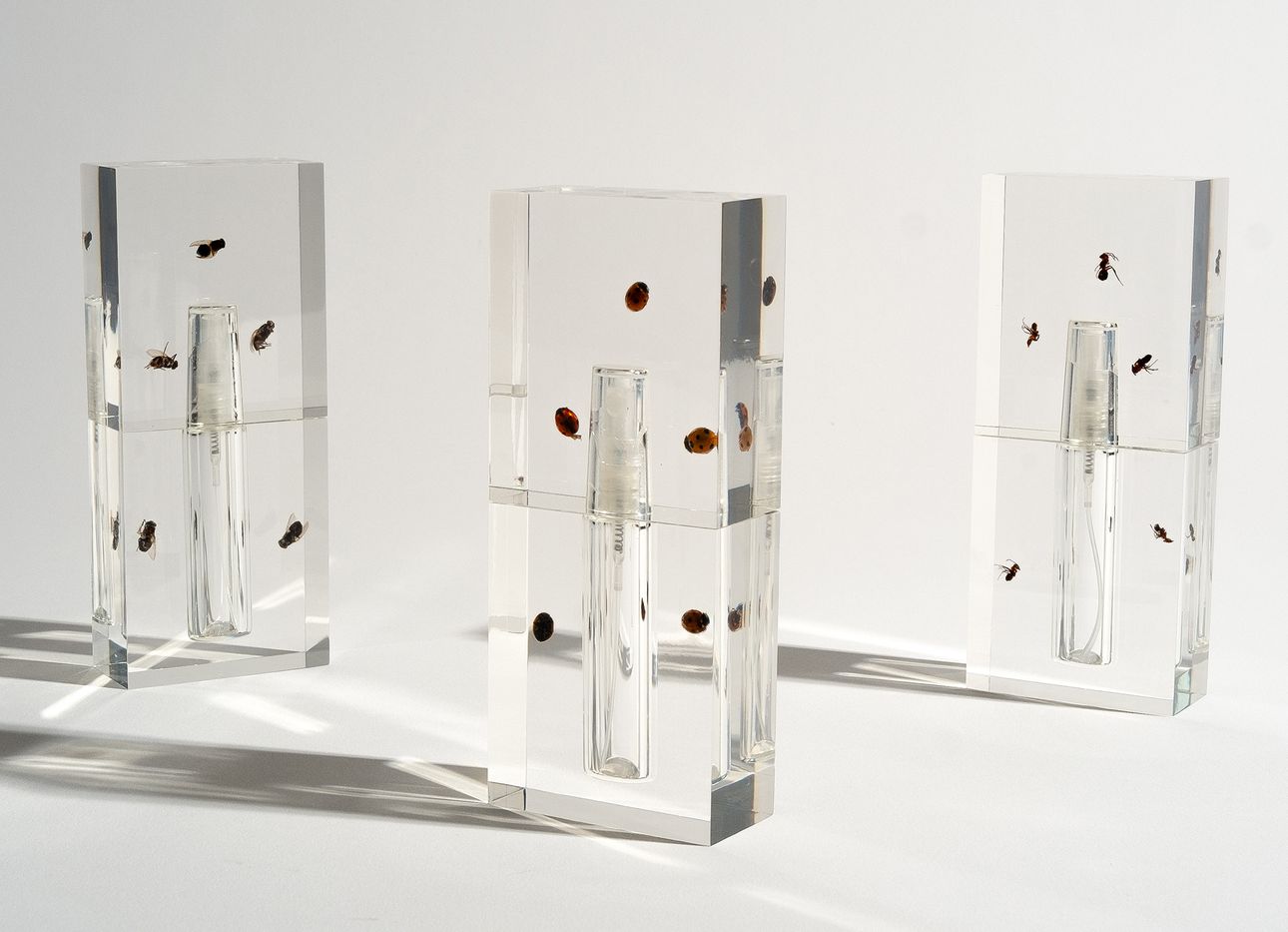
Artist Anicka Yi Mines Biology and Technology to Craft a Line of Perfumes
Olfactory landscapes, living matter, and time are just a few of the elements known to factor into the highly experiential works of the conceptual artist Anicka Yi, whose philosophical turn of mind looks to biology, technology, and beyond. Here, she shares her thoughts on the power of smell, ahead of her first foray into commercial scent, Biography, a trio of perfumes launching next week at Dover Street Market.
Scent is central to many of your works. What intrigues you most about the power of scent, whether on its own or in combination with the other senses?
Think about how much we don’t know—how difficult it is to understand smell.
There are physiological and scientific hurdles and challenges that make it difficult to study. For instance, we really don’t know that much about how scent receptors work, mostly because we don’t know how to replicate them in order to study them adequately. There’s been a lot of studies around insects that have a tremendous level of olfactive capability, and I know that we’re trying to borrow from what we understand about their olfactive systems to try to improve on technologies. There are also social and societal biases comingling with that—because we place much more emphasis and primacy and priority on ocularity, which is why we know so much more about vision technology than we do about olfaction.
Would you say scent is more intuitive?
I’ve been on record saying, “I don’t like looking at stuff.” Especially in the age of social media, I just feel so oversaturated. Personally, even from a very young age—this was certainly pre-internet, and pre–social media—I had kind of a disposition for a discomfort and anxiety around looking, and constantly having to look and see, and almost objectify other people through the gaze. Maybe it comes from being female—being seen as female, and trying to thwart the male gaze. Then you add the other layers: of being Asian American, coming from an immigrant family, and being looked at in a pernicious, very unwelcome way. For me, vision has always come with a lot of baggage and some deal of hostility.
Female identity is at the heart of Biography. The first scent references Fusako Shigenobu, a leader of the Japanese Red Army; the second, Hatshepsut, a female pharaoh of Ancient Egypt; and the third is an artificially intelligent entity meant to reference “every woman,” past, present, and future. How did you land upon each?
For Biography, I’m challenging the idea of portraiture, but also challenging the stale conventional tropes of commercial fragrance, and the narrative that you should aspire to, or be inspired by, visuals of an actor, or a race car driver, or a pop star. I don’t know about you, but I don’t identify with any of that. The marketing industry just doesn’t get it. There’s so much space and room to build an alternative, infinite amount of rich narratives around this space, because very little has been done.
I think about how these conditions are for females, historically. That was a springboard for thinking about these very characters, because they didn’t perform the mold of what a conventional or traditional female would be in their time. My hope is that, with the fragrance, people can think about these stories if they are interested in them, and they’d be expanding, adding and contributing to it with their own experience of wearing the fragrance.
Did working on a commercial scent change your creative process at all?
This is an extension of my practice. It has all the hallmarks of my practice: the sculptural vocabulary, the olfaction, the philosophical backbone and ideas. What makes this different from the other sorts of projects that [my studio] has executed or produced is thinking about a different kind of outreach in how people experience the work. Historically, we’ve presented the work in primarily contemporary art institutions and galleries. I don’t want the work with Biography to be predicated on my art practice, per se—I want this to be almost like a blind challenge: People can go and smell the fragrance, and they don’t need to know any context about who the artist is, or what the project is about. Ultimately, I want the fragrance to rest on its own merits.